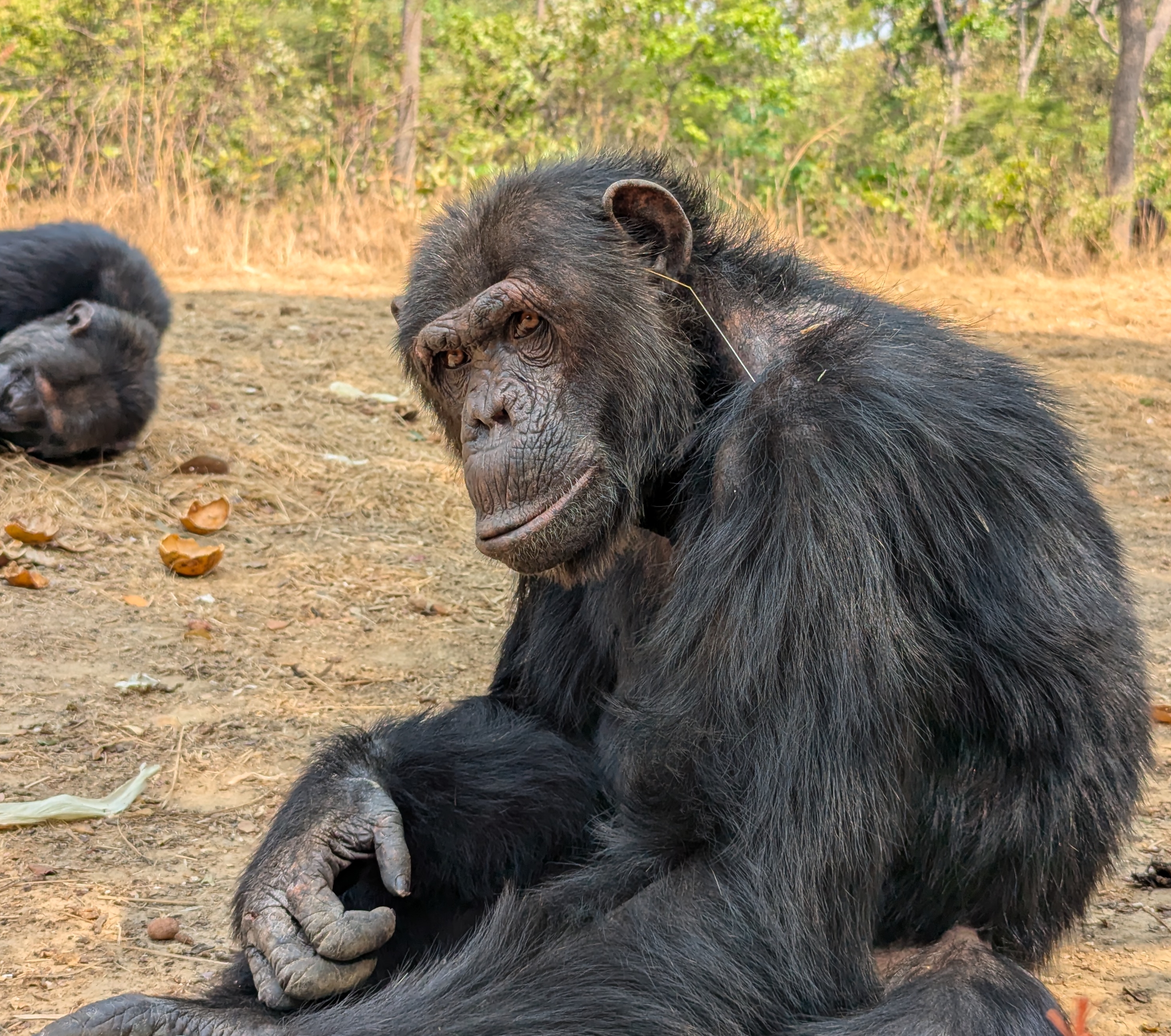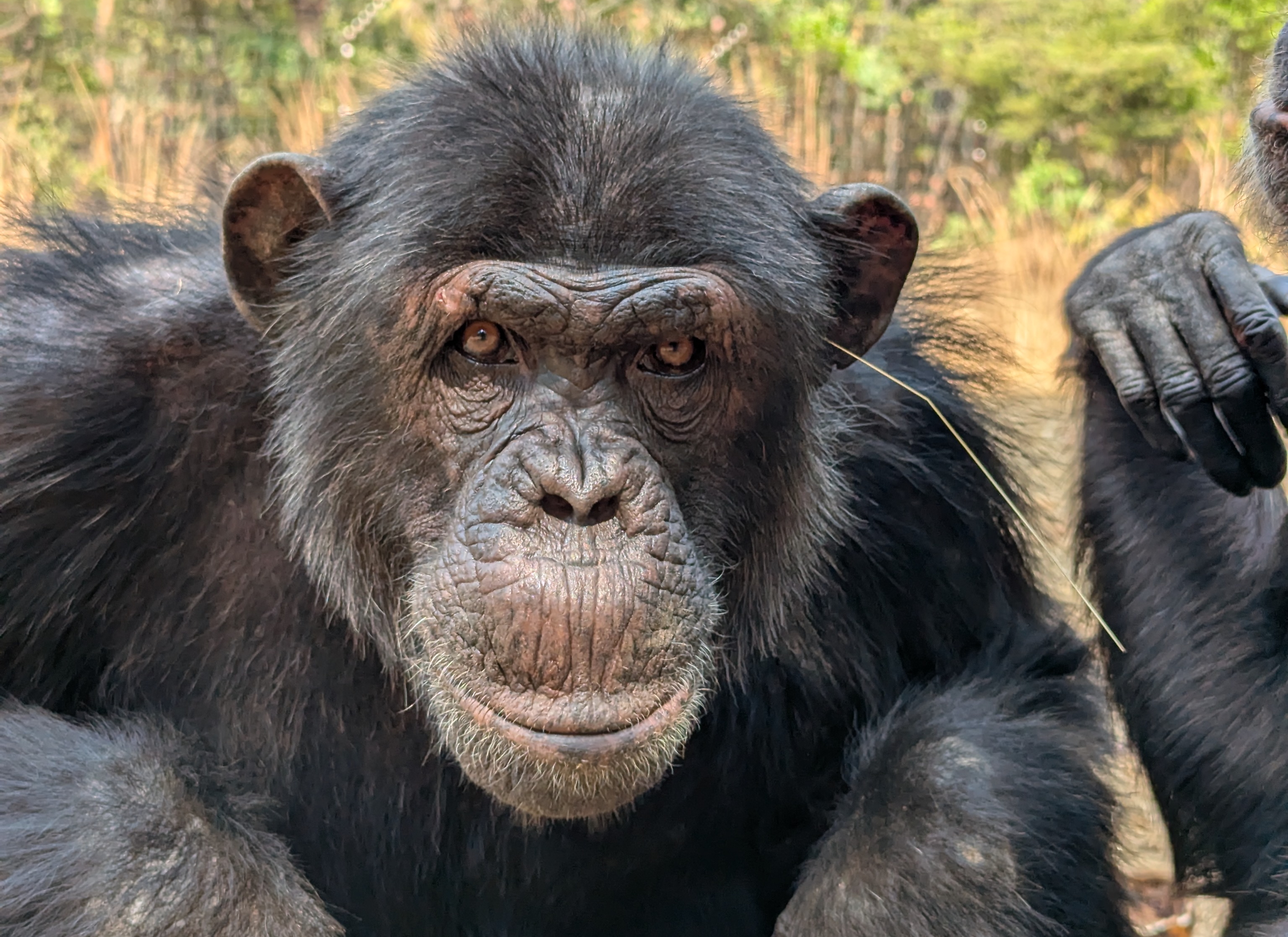Chimps develop fashion trend by shoving grass in their ears — and in their butts
Chimpanzees are running around with grass in their ears and butts at the Chimfunshi Wildlife Orphanage in Zambia. This is the second time a bizarre fad-like behavior has gripped the sanctuary's chimps, but wearing the grass accessories in their butts is a new twist.

Captive chimpanzees have started dangling grass out of their ears and butts in an unusual fad-like "trend," a new study finds.
The chimps (Pan troglodytes) insert a blade of grass or stick into their ear or rectum and then just let it hang there for a while, researchers reported. The behavior doesn't appear to have any physical or medical purpose, but spreads socially from chimp to chimp.
Researchers first reported the grass-in-ear behavior in 2014. At the time, only one group of chimps living at the Chimfunshi Wildlife Orphanage in Zambia exhibited the behavior. Now, another of the sanctuary's groups has independently adopted the behavior and introduced a daring new style — wearing the grass in their rectums. The researchers described the new behavior in a study published July 4 in the journal Behaviour.
The two groups don't have any contact with each other, but they do share the same human keepers. Researchers suspect that the ear part of the behavior originally came from chimps copying their human caretakers, before spreading through the groups and changing slightly.
"These caretakers reported that they sometimes put a blade of grass or a matchstick in their own ears to clean them," study lead author Edwin van Leeuwen, an assistant professor of animal behavior and cognition at Utrecht University in the Netherlands, said in a statement. "Caretakers in the other groups said they did not do this. The chimps in the one group then figured out to stick the blade of grass in another place as well."
Related: Watch boozing chimps share alcoholic fruit. Is this how social drinking started?
Social animals often copy behaviors from one another. These behaviors are typically centered around finding food or some other critical survival skill. However, researchers have also occasionally documented temporary fads spreading through populations without an obvious benefit. Some orcas (Orcinus orca) in the Northwest Pacific are famous for this, having developed a bizarre habit of swimming around with dead salmon on their heads.
Get the world’s most fascinating discoveries delivered straight to your inbox.
The authors of the new study first noticed the grass-in-ear behavior in a female chimp named Julie in 2010. Julie repeatedly put blades of grass in her ear and let them hang there. Researchers later recorded seven other members of her group picking up the trend. Julie died in 2013, but some of the group continued with the behavior, suggesting it had become a cultural tradition, according to the study. The second group then began performing the behavior in 2023.
To re-study this trend, researchers observed all of the sanctuary's chimps over 12 months between 2023 and 2024. Only two chimps from Julie's group were still wearing grass in their ears — one of which was Julie's son. Meanwhile, in the other group, a male named Juma was identified as the possible innovator of the daring new grass-in-butt variation, which spread to most of his group mates within a week, according to the study.

The researchers suspect that captivity played a role in the trends. Wild chimps, which haven't been observed engaging in such seemingly frivolous behaviors, fill their days finding food and have to deal with many more challenges than captive chimps, which typically have their meals delivered.
"In captivity, they have more free time than in the wild." Van Leeuwen said. They don't have to stay as alert or spend as much time searching for food."
The jury is still out on what the chimps are getting out of their grassy orifice accessories. However, the researchers speculated that this kind of social learning may help bolster social identity and social cohesion.
"It could also serve a social purpose," Van Leeuwen said. "By copying someone else's behaviour, you show that you notice and maybe even like that individual. So, it might help strengthen social bonds and create a sense of belonging within the group, just like it does in humans."

Patrick Pester is the trending news writer at Live Science. His work has appeared on other science websites, such as BBC Science Focus and Scientific American. Patrick retrained as a journalist after spending his early career working in zoos and wildlife conservation. He was awarded the Master's Excellence Scholarship to study at Cardiff University where he completed a master's degree in international journalism. He also has a second master's degree in biodiversity, evolution and conservation in action from Middlesex University London. When he isn't writing news, Patrick investigates the sale of human remains.
You must confirm your public display name before commenting
Please logout and then login again, you will then be prompted to enter your display name.


